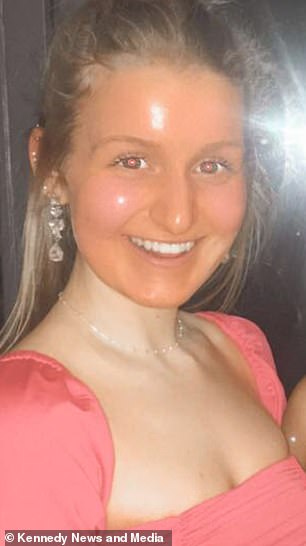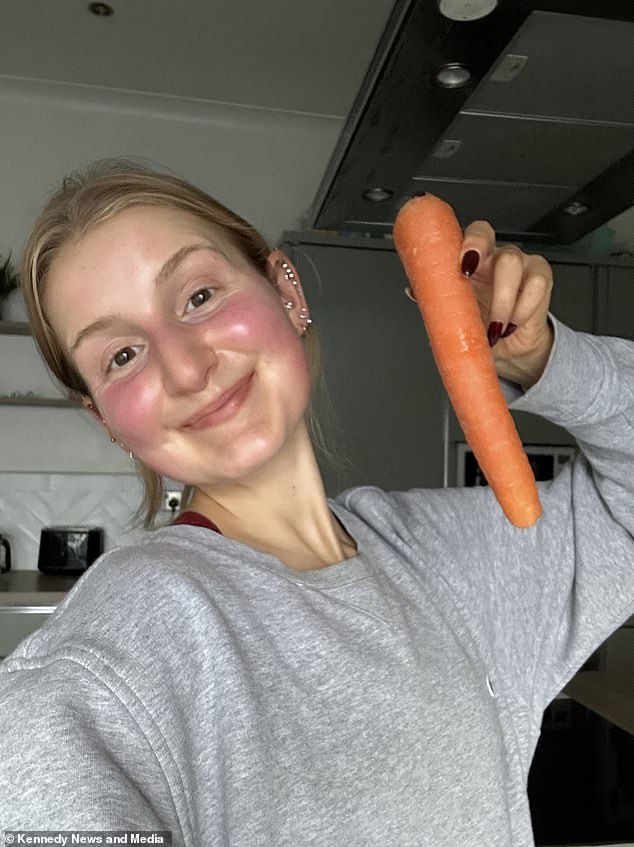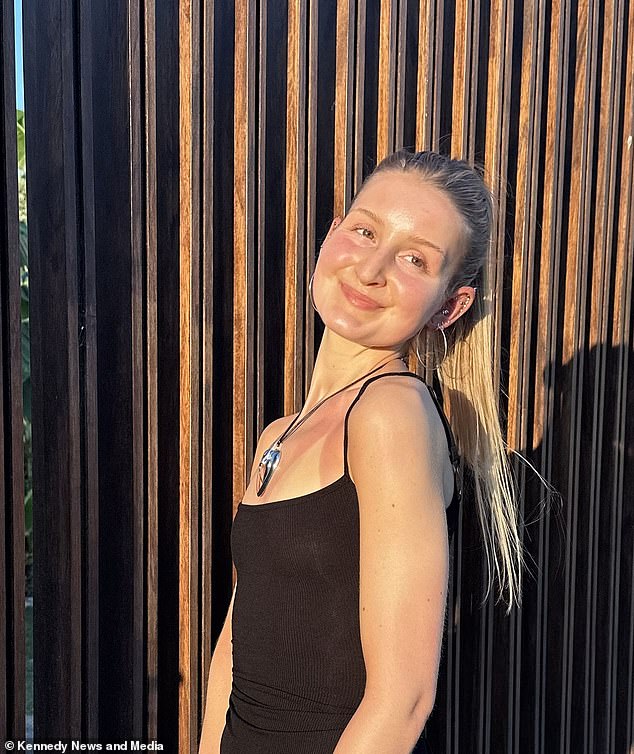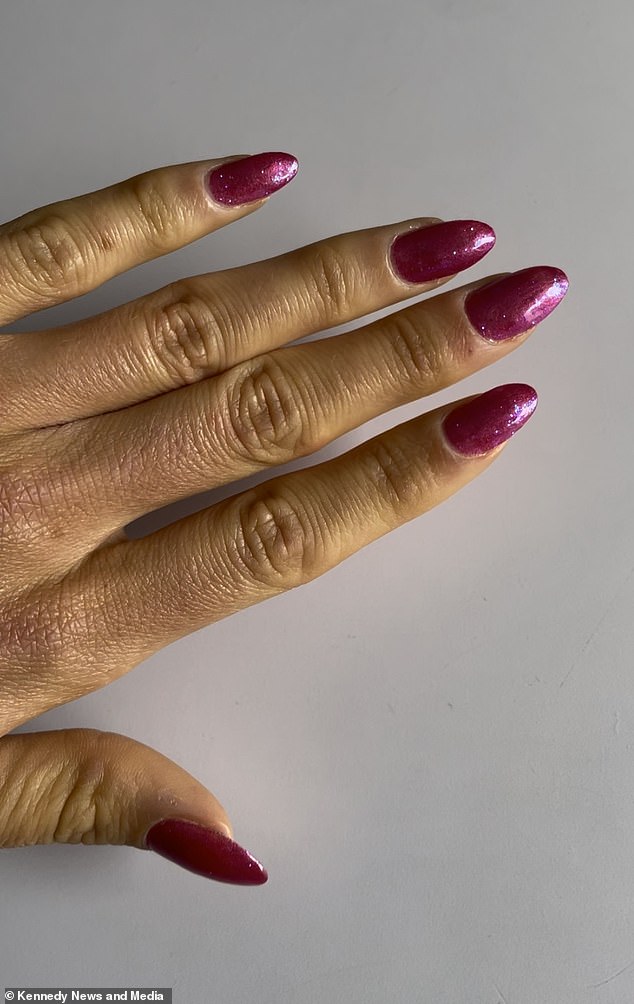Woman, 21, claims she was left looking like an ‘Oompa Loompa’ due to 10-a-day carrot habit
A 21-year-old woman has told how she ate so many carrots that she looked like an Oompa Loompa bright orange glow.
Dena Rendall, who lives in Edinburgh, ate up to ten carrots, three peppers and one sweet potato every day in a bid to improve her health.
But the 21-year-old became concerned when others noticed her skin had turned orange and assumed a dodgy fake tan, make-up disaster or jaundice was the cause.
However, after looking up her condition online, she diagnosed herself with carotenemia: a build-up in the blood of the pigment that gives carrots and other fruits and vegetables a yellow, orange or red color.
The customer experience worker only reduced her carrot intake to eight a day after a shocking photo showed her looking eerily similar to Roald Dahl’s orange face from Charlie and the Chocolate Factory.
Mrs Rendall now eats around six carrots a day – she buys six kilos from Asda every week and spends a total of £40 on vegetables – and she is happy to have left her tan ‘all year round’.
Dena Rendall, 21, from Edinburgh, says she gets her bright orange glow from her love of carrots and used to eat up to ten a day
Mrs Rendall’s love of carrots started at the age of 12 when she started eating one or two a day – which slowly increased to a whopping ten a day.
She said: ‘When I started dieting I started eating carrots, but in a normal amount – maybe one or two a day.
‘At one point I was eating ten carrots every day.
‘I love carrots and enjoy eating so many in a day, but I know I’m not necessarily eating in a way that is normal for other people.
“I’ve convinced myself that I never feel sick because of all the fruits and vegetables I eat in a day.”

Her peers asked what fake tan she was wearing and if she was wearing makeup, which made her feel insecure. This photo, taken before an 18th birthday party, exposed the shocking color difference between her neck and face
She first noticed the change in her skin color at school, when her peers started asking if she was wearing fake tan or makeup.
Mrs Rendall said: ‘People at school started noticing and asking me if I was wearing fake tan, which made me a bit self-conscious.
‘Every time I walked into school people would say ‘oh, are you wearing make-up today?’
“I’m not someone who wears makeup and that’s why I think people were like, ‘Did she try to put her makeup on and failed miserably’ because she doesn’t do her makeup regularly.”
Her mother also noticed her skin color and worried that she might develop jaundice: a yellow discoloration of the skin due to a liver problem.
At this point, she had not yet linked her carrot habit to the yellowing of her skin.
However, her mother then remembered a cousin who ate a lot of carrots and sometimes looked a bit orange.
After investigating her symptoms, Mrs. Rendall diagnosed herself with carotenemia.
The condition is caused by a build-up of beta-carotene (the pigment in red, orange and yellow fruits and vegetables) in the blood, which can cause the skin to turn an orange tint.
It’s not just roots that cause the condition. Apricots, cantaloupe, mangoes, oranges, pumpkin, squash and sweet potatoes are also high in beta-carotene and are therefore culprits when consumed in large quantities.
Carotenemia is usually a sign that someone is following a restrictive diet by eating large amounts of a specific food, which puts him or her at risk of not getting enough nutrients from other types of food.

Mrs Rendall ate as many as ten carrots, three peppers and a sweet potato every day to improve her health

She admits she spends £40 a week on vegetables alone, buying six kilos of carrots from Asda

After Googling her symptoms to find out what was causing her orange glow, it turned out that she had carotenemia and not a tan.
Mrs Rendall decided to cut her carrot consumption from 10 to 8 a day after a photo revealed the shocking color difference between her neck and face.
She said: ‘I was on my way to my boyfriend’s 18th birthday party and getting ready with all my girlfriends and we were taking pictures.
‘Nobody told me I looked particularly orange when we were getting ready, it was just when we turned on the flash and everyone started laughing.
‘I didn’t know what was so funny and thought, oh my god, that can’t be right. I looked like an Oompa Loompa! I had mascara on but no face makeup at all, I haven’t worn face makeup since I was 13.
‘I then decided to go from ten to eight carrots. It’s not something I would notice, more people would notice and point it out to me.’
Once she cut back on carrots, her orange hue became less noticeable and the comments about her tan disappeared. Mrs Rendall now eats about six carrots a day.
She said: ‘I’m a blonde, pale girl with very fair skin, but because I eat so many carrots I can get a tan all year round.’
Mrs Rendall added: ‘I never think I have to get my carrots in, that’s just what I eat, I don’t think about it.

Ms Rendall decided to cut her eating ten carrots a day to eight, which improved the appearance of her skin

Eating fewer carrots made her orange hue less noticeable. Carotenemia can also cause the palms of the hands and soles of the feet to turn a yellowish color
‘When people ask me what color I use and I say I just eat a lot of carrots, they think I’m joking.
“Some days I look orange and some days it’s just a nice natural glow, it changes.”
She encouraged others to try adding more carrots to their diet, rather than turning to tanning beds, which emit ultraviolet light that increases the risk of skin cancer.
She said: ‘It’s definitely healthier than sunbeds. I am very anti-tanning beds, I don’t think it is healthy at all. I don’t think it’s worth risking the negative effects for me, so I guess I’ll just stick to my roots.
‘I would certainly encourage people who want to change their skin colour, why not? It won’t affect you negatively, but maybe not to the extent that it is an obsession and a fixation.
‘I wouldn’t encourage people to go that far, but if adding carrots to your diet to change your skin pigment isn’t harmful, why not? It’s all in moderation.’
An average carrot contains about 4 milligrams of beta-carotene, and people would have to consume about 20 to 50 milligrams a day for weeks before they would notice a difference in their skin color, dermatologists say.
Although carotenemia is not dangerous and goes away within a few months, they recommend eating a variety of nutritious foods in appropriate amounts to maintain good health.
